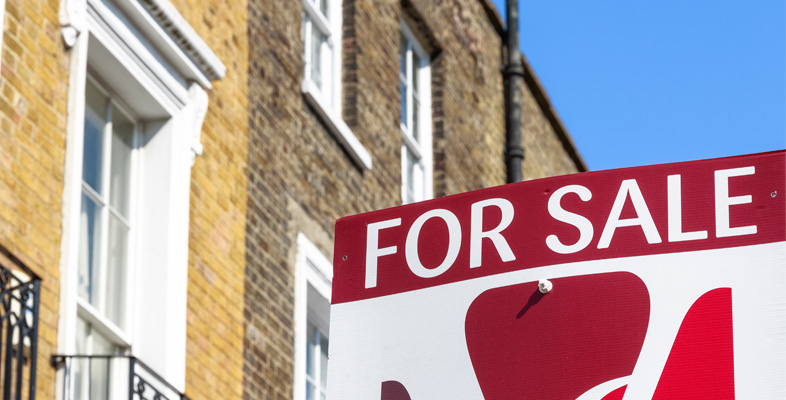2.4 Homes as a leveraged investment
Leverage – in other words, taking out a loan, such as a mortgage, to fund the purchase of an investment – increases gains when the item rises in price. Of course, there is a cost (monthly payments) for the mortgage, but many households would have had to pay out similar or even larger amounts in rent if they had not bought a home. So, when house prices are rising, there can be significant potential gains for existing homeowners.
However, leverage also increases potential losses if the price falls. As you saw in Figure 4, house prices can – and do – fall as well as rise. Borrowing to buy an investment, such as a home, whose price can vary always involves some risk of:
- Capital loss: Whether or not a householder borrows to buy their home, they will make a capital loss if the value of their property falls below the price they paid. For example, if a home cost £100,000 and its value falls to £90,000, the capital loss is £10,000 (£90,000 - £100,000).
- Negative equity: When a householder borrows to buy their home, they own only a small part of their home which is called their ‘equity’; the rest in effect belongs to the lender. If house prices fall to such an extent that the value of the home is less than the outstanding loan, the homeowner is said to have negative equity.
Also, you have been looking at national average house prices. House price experience is different in different regions of the UK – in particular, London has in recent years seen much higher price increases and subsequently higher falls than elsewhere. Moreover, when buying a home, a household is putting a lot of eggs in one basket – if their home unexpectedly develops subsidence or is condemned to make way for a new rail route, its investment value could be quite different from the regional or national trend.
So sometimes, despite the popular adage, owning a home is not ‘as safe as houses’.
Activity 3 The effect of leverage
Read the following situations and fill in the boxes with your answers. Do not include ‘£’ or ‘%’ in the answers you type into the boxes and make sure to include a minus sign for any negative values.
Gavin, having inherited a substantial sum, pays cash for a house costing £200,000. Over the next five years, the house increases in value by 2.6% a year (over and above general price inflation) to £227,400. How much profit has Gavin made? Express the profit both in pounds and as a percentage (to one decimal place) of the amount Gavin invested in purchasing his home.
Alexi buys a house also costing £200,000 but with a mortgage of £180,000. After five years, the home is worth £227,4000. After paying off the mortgage (assume £180,000 is still owed), how much profit has Alexi made? Express the profit both in pounds and as a percentage of the money Alexi invested in the purchase of her home.
Using an inheritance, Arif pays cash for a house costing £200,000. Over the next five years, the house price falls by 25% (after adjusting for inflation) to £150,000. How much loss has Arif made? Express the loss both in pounds and as a percentage of the amount Arif invested in purchasing his home.
Holly buys a house for £200,000 using a mortgage of £180,000. Over the next five years, the house price falls 25% (after adjusting for inflation) to £150,000. After paying off the mortgage (assume £180,000 is still owed), how much loss has Holly made? Express the loss both in pounds and as a percentage of the amount Holly invested in purchasing her home.
In light of your answers to these questions, comment on the risk involved in buying a home with a mortgage and why households may be willing to take the risk.
Discussion
Buying a home with a mortgage increases the percentage profit when house prices rise (question 2 compared with question 1). But it also increases the percentage loss if house prices fall (question 4 compared with question 3). The increase in both profit and loss is large, suggesting the risk is high.
Households may perceive the risk as being lower than your answers to questions 1 to 4 suggest, if they think that house prices are more likely to rise than to fall.
Even if households think the risk is high, few are in a position to buy a house outright for cash given that it is so expensive. Therefore they have no choice but to take out a mortgage. Bear in mind that, if house prices fall, this is a loss ‘on paper’ and not a real loss. It only crystallises as an actual loss if the home is sold. Homeowners may be able to put off selling their home until prices have recovered.

